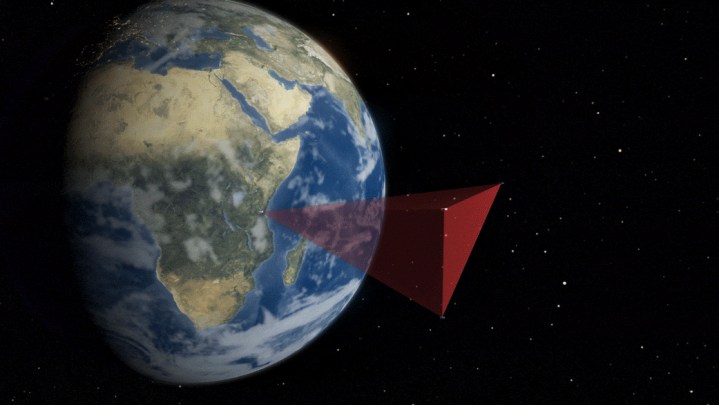
The MMS spacecraft consist of four 3,000-pound satellites flying within the magnetosphere, Earth’s protective field, in a pyramid shape. The pyramid formation allows the instruments to collect three-dimensional observations of magnetic reconnection. The MMS spacecraft are the first instruments to directly travel through areas where magnetic reconnection occurs.
The goal of the MMS mission is to observe and document magnetic reconnection within the Earth’s magnetosphere. Magnetic reconnection is a cosmic phenomenon in which magnetic fields break apart and reconnect, in the process releasing huge bursts of energy and charged particles in every direction. Scientists believe that this phenomenon occurs throughout the universe and is one of a few ways in which material becomes energized. Here on Earth, we’re more familiar with a beautiful after-effect that magnetic reconnection produces — the northern and southern lights.
The MMS mission launched on March 12, 2015 on the Atlas V rocket from Cape Canaveral, Florida. The MMS mission has been the first time scientist have been able to collect three-dimensional data to study magnetic reconnection. By studying magnetic reconnection in the Earth’s magnetosphere, MMS will help scientists understand the phenomenon elsewhere as well, such as in the atmosphere of the sun and other stars, in the vicinity of black holes and neutron stars, and at the boundary between our solar system’s heliosphere and interstellar space.
Editors' Recommendations
- NASA’s Orion spacecraft has ‘critical issues’ with its heat shield, report finds
- NASA needs a new approach for its challenging Mars Sample Return mission
- SpaceX all set for a record-breaking rocket launch on Friday
- NASA astronauts will try to grow plants on the moon
- NASA and Boeing start fueling Starliner spacecraft for first crewed flight


